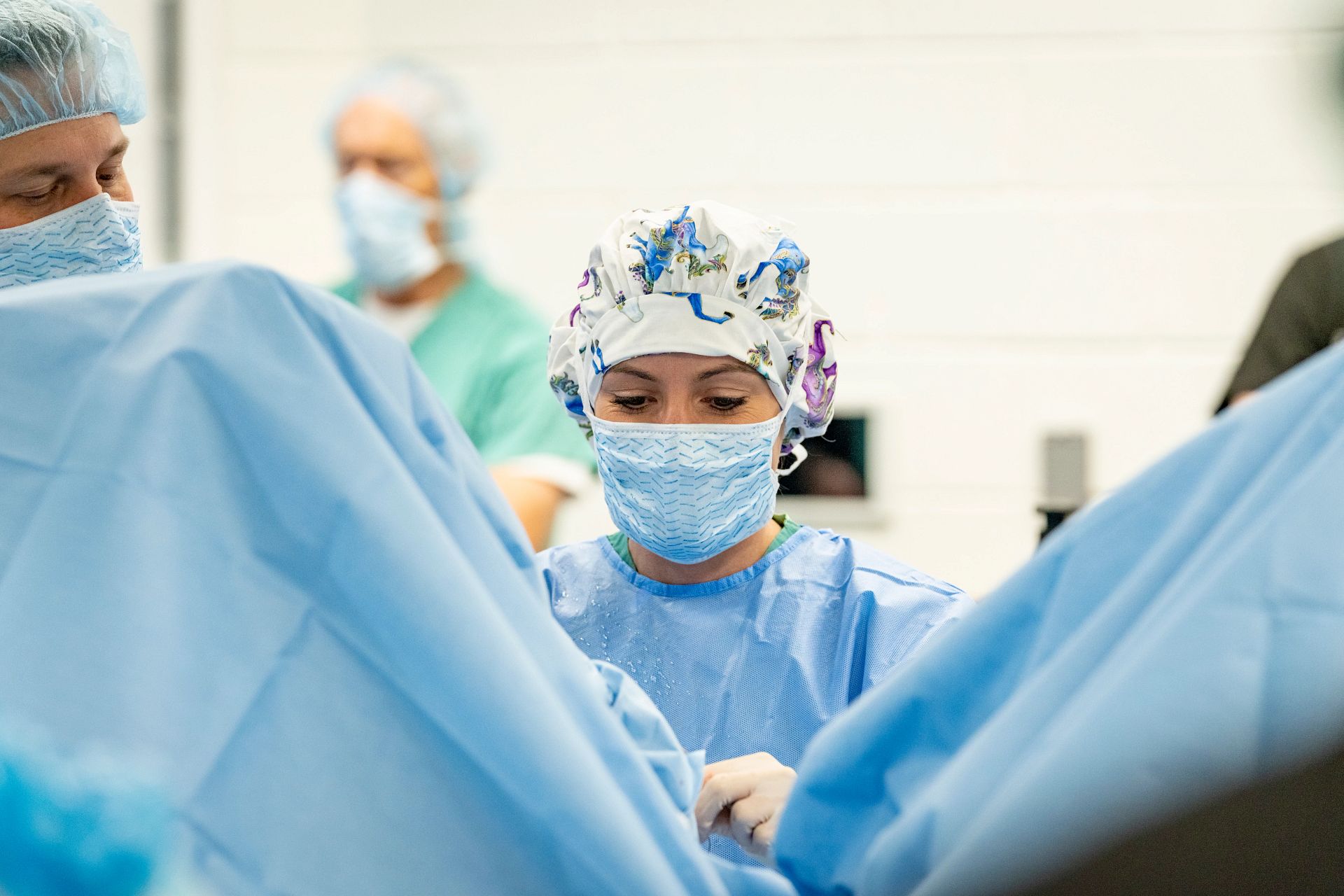
Translatable research
CSU veterinarians expand on key equine orthopedic research
that could also benefit people
story by Christopher Outcalt
published Jan. 23, 2024
It was early November, and Dr. Lynn Pezzanite was standing in an operating room at Colorado State University’s Translational Medicine Institute, flanked on either side by two of her most influential mentors, Dr. Laurie Goodrich and Dr. Jason Stoneback. Goodrich and Stoneback had scrubbed in to assist on a pair of equine surgeries tied to Pezzanite’s first research grant as the principal investigator.
“They’ve been such supporters collectively in my success,” Pezzanite said. “It was surreal to be in that position.”
Building on findings from her postdoctoral work, Pezzanite, an equine surgeon and an assistant professor in cellular and molecular biology, was embarking on a study designed to better understand how immune cells behave as osteoarthritis progresses in horses. The degenerative joint disease is one of the most common disorders that equine veterinarians encounter, impacting up to 80% of horses older than 15. Treatment options, however, remain limited.
The idea behind Pezzanite’s study — funded by a two-year grant from the nonprofit Grayson-Jockey Club Research Foundation — was that examining the early-stage immune response to osteoarthritis might allow the group to identify certain biological markers of different stages of the disease. From there, the team could perhaps tailor treatments or gene therapies to specific stages, helping prevent the disease’s progression. “We’re really trying to look at: What is the best timing to intervene?” Pezzanite said.
Stoneback’s presence in the operating room signaled another research goal. As the University of Colorado Anschutz Medical Center chief orthopedic trauma surgeon and director of CU’s Limb Restoration Program, Stoneback works with humans, not horses. Nevertheless, he views the research being done by Pezzanite, Goodrich – who directs CSU’s Orthopaedic Research Center – and others at the Translational Medicine Institute, including Dr. Steven Dow, as potentially “game-changing” for his own practice.
“The work going on here,” Stoneback said, “could have direct translational impact in humans.”
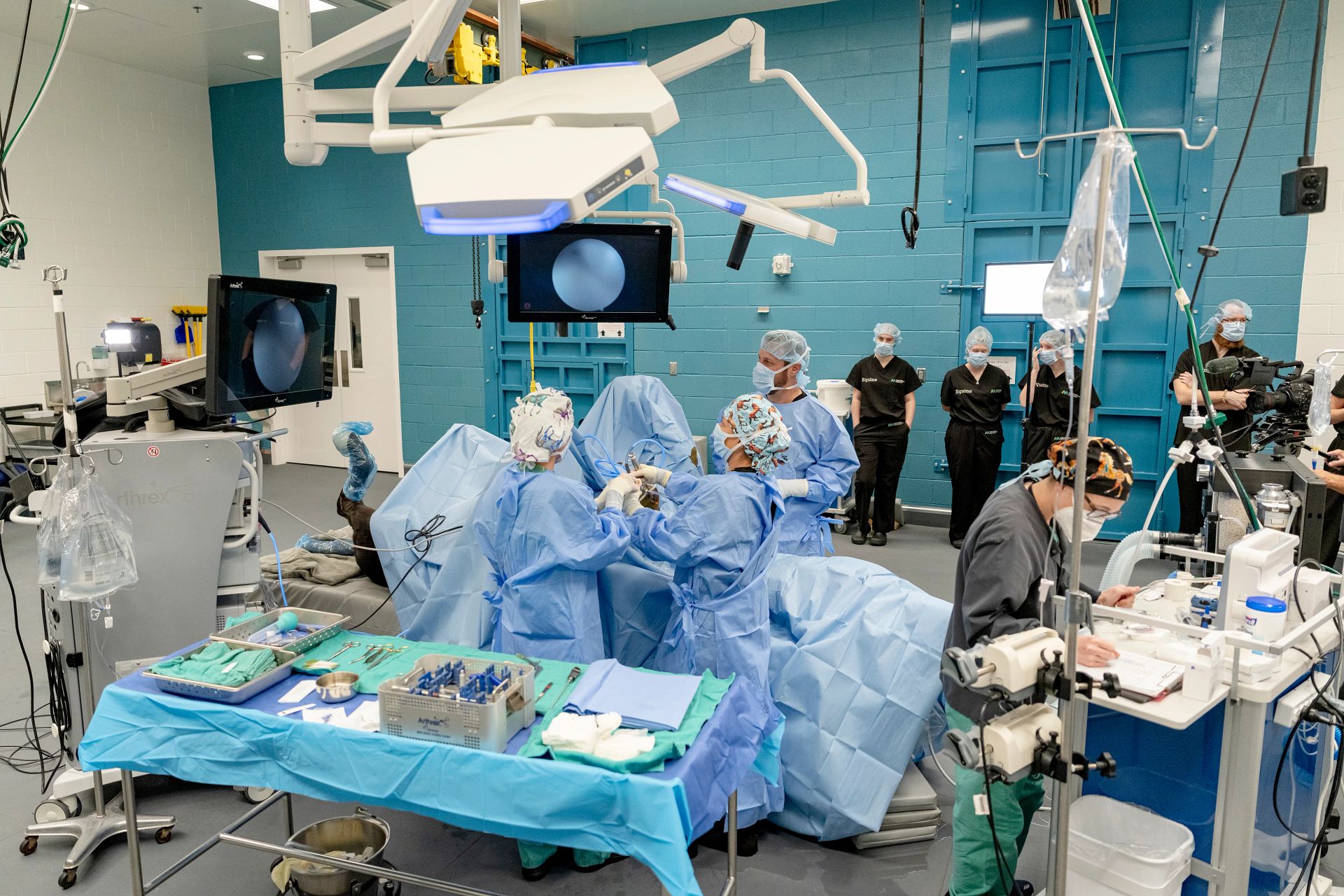

Some exceptional people
Stoneback is among a small group of physicians worldwide who regularly perform an innovative procedure that involves implanting a metal orthopedic rod into an amputee’s residual limb. The method, known as osseointegration or bone-anchored limb replacement, is considered superior to fitting an amputee with a traditional prosthesis because the implant connects directly with the patient’s body, helping to improve awareness, balance and gait.
One of Stoneback’s most significant challenges is controlling possible infection. The standard methods don’t always work well with his patients; for instance, antibiotics won’t prevent bacteria living on metal. “The biggest concern we have is that the area gets catastrophically infected and we can’t control it,” he said, “and then we have to remove the device.”
Searching for new ways to approach that problem is what led Stoneback to collaborate with CSU’s Translational Medicine Institute. First established in 2018, the partnership has resulted in multiple projects aimed at developing innovative approaches to treat infection and other complications that occur after trauma, including the osteoarthritis work launched in November.
A world-class human surgeon, Stoneback had been looking forward to the experience in the equine operating room. “Instead of being the person who people are looking to for guidance and directing exactly what’s going to happen, I’m here as an observer and a participant,” he said. “It’s super cool to come and learn from such exceptional people.”
During surgery, the team worked to create a tiny chip in the horse’s cartilage. The procedure is designed to induce a small amount of inflammation in the joint, prompting an immune response. During the next four months, Pezzanite would then monitor and study what happened. “I’ll take tissue samples and look at how the gene expression changes at a single cell level,” Pezzanite said. “Hopefully that will inform us further on biomarkers of disease progression and the best timing to intervene.”

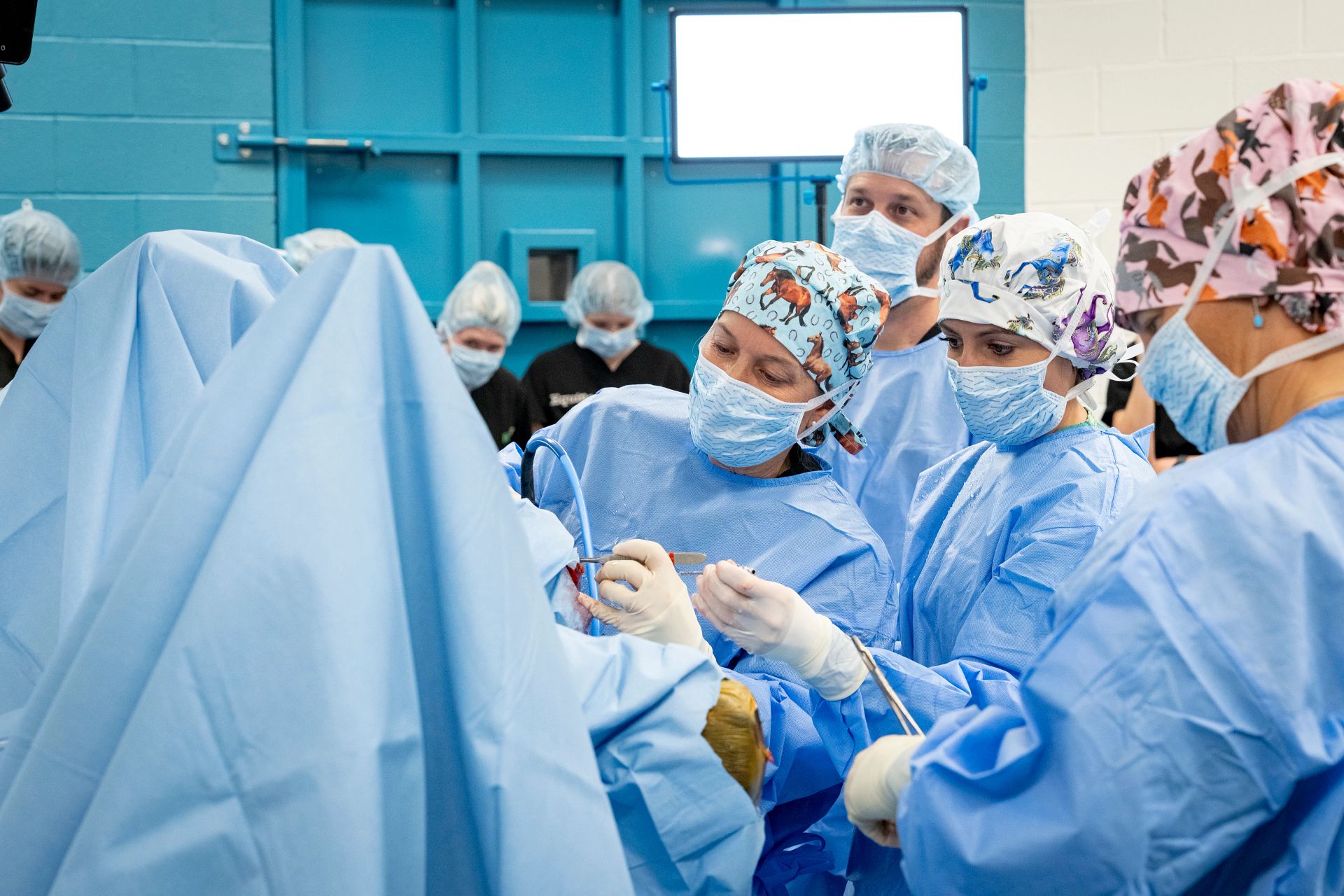
Top choice
Pezzanite attended vet school in upstate New York at Cornell University. Her mother was a veterinarian, and Pezzanite always had a sense that she would spend her career working with horses too. When it came time to apply for residency, Pezzanite was attracted to CSU because of the University’s strong reputation as a hub for orthopedic research. “This was my top choice,” Pezzanite said. “I really only wanted to come here.”
After residency, Pezzanite remained at CSU to work on her postdoctoral degree. She dug further into the intersection of orthopedic research and immunology, collaborating with Goodrich and Dow, director of CSU’s Immunotherapy Research Laboratory housed within the Translational Medicine Institute and Flint Animal Cancer Center.
Working in vitro as well as in rodent models, Dow had pioneered immunotherapies designed to treat antimicrobial-resistant infection. That work presented an opportunity for Pezzanite: Testing the effectiveness of Dow’s therapies in horses became the foundation of her postdoc research. “I was starting my Ph.D.,” Pezzanite said, “and we were interested in taking this forward in a larger animal model.”
Around the same time, Dow met CU’s Stoneback at a conference in Denver. When Stoneback learned about Dow’s immunotherapy research an idea clicked: He thought the immune-activated cellular therapies might help with the infection challenges he sees with his patients and expressed interest in integrating the work into his limb restoration practice. From there, a wider partnership formed. Stoneback joined Pezzanite’s postdoctoral committee, and she regularly traveled to Denver to shadow Stoneback in his operating room and learn from his practice.
In October 2022, Pezzanite, Dow and Goodrich published promising results from the horse therapy trials in the journal Annals of Translational Medicine. After that, Pezzanite began to think through next steps, both for the research and for her career. She had multiple offers to join faculty at other schools but decided to stay in Fort Collins in no small part because of the support from Dow, Goodrich and Stoneback. “All three of them have been instrumental in me staying,” she said.
The experience with Stoneback’s practice in particular made Pezzanite realize that she wanted to focus specifically on translational medicine, researching therapies that would benefit animals but that could also be applied to advancements in human medicine.
“I initially viewed the potential for our work to help people as an added benefit,” Pezzanite said. “And now, I honestly view work that benefits both animals and people as our primary focus.”
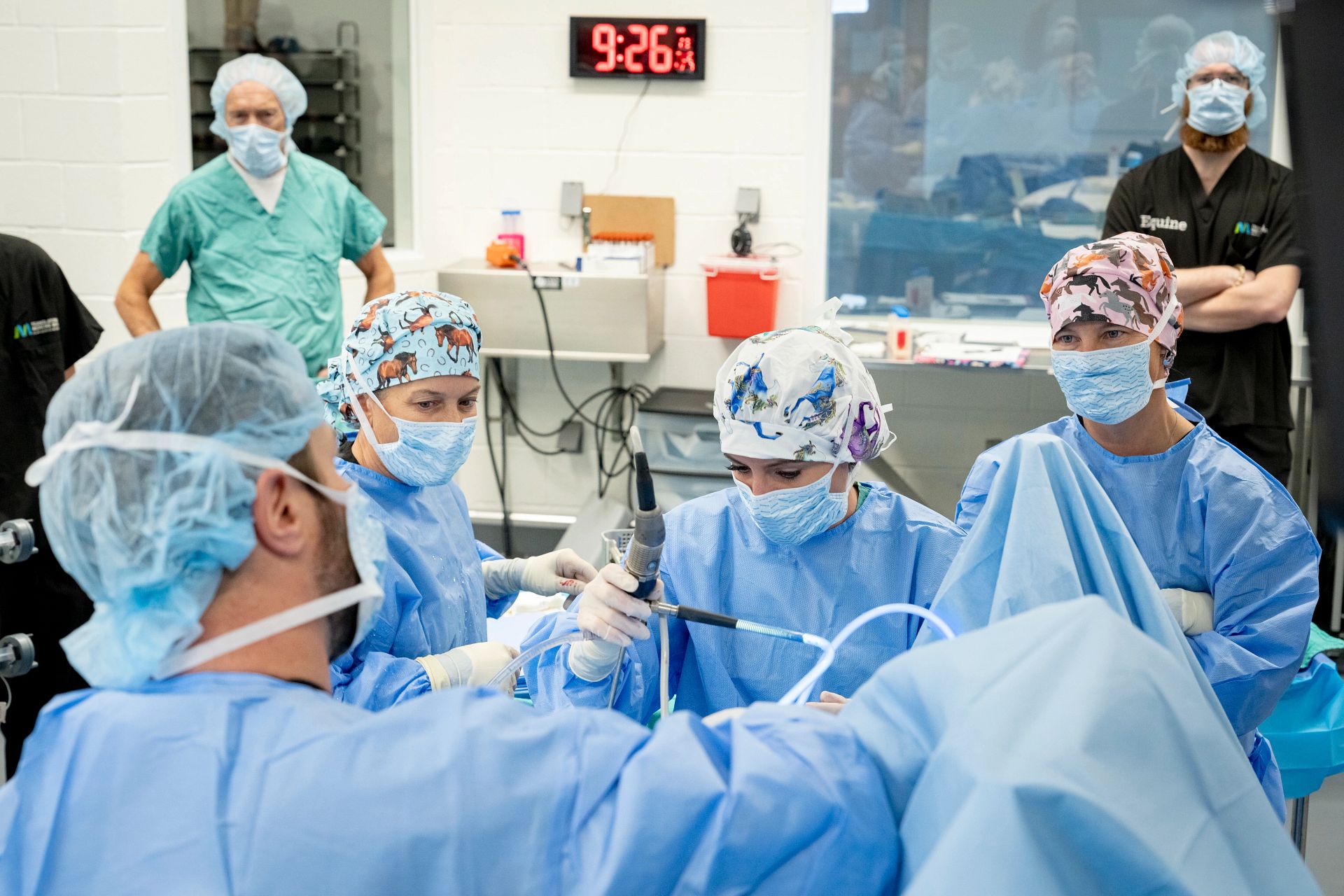
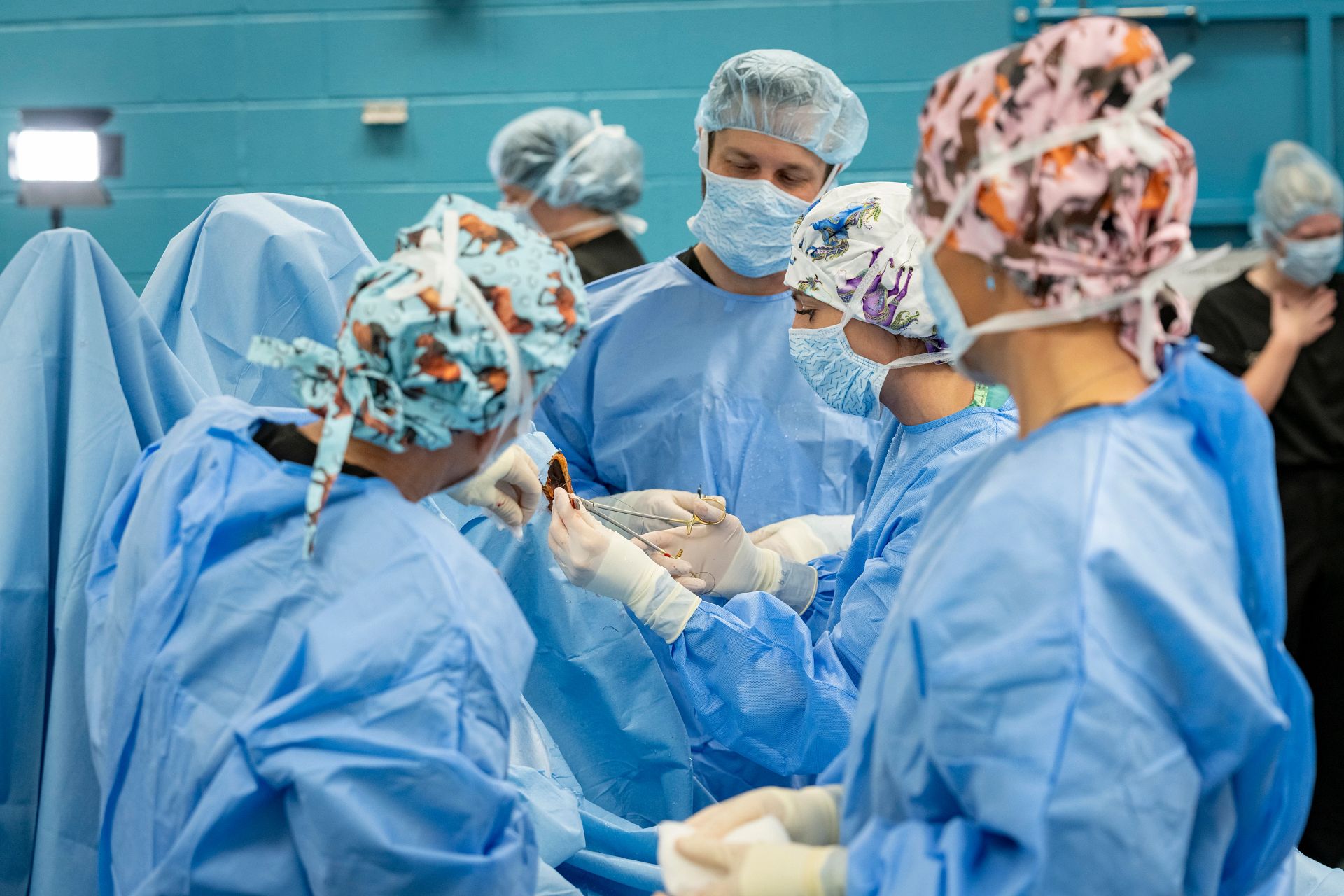
A well-positioned leader
Within the past 10 years, Goodrich said, the concept of translational medicine has become more widely accepted and practiced in the broader scientific research community. What’s more, Goodrich believes that CSU’s Translational Medicine Institute is well positioned to be a leader in the growing field. “Right now, across the country and the world, you’re seeing a lot of translational medicine centers pop up,” Goodrich said. “But very few of them are at veterinary institutions.”
Having the institute situated at a university with so many veterinarians who are both skilled researchers and clinicians is a huge asset, Goodrich said. “Clinician scientists are the ones who take these therapies and use them with their patients,” she said. “It’s very translational because they can go back and forth between clinics and the lab environment to investigate.”
Pezzanite, Goodrich said, is an excellent example of exactly that kind of translation scientist. “She’s been outstanding in every part of her training here,” Goodrich said. “She has an amazing capacity to take an idea and turn it into a grant and execute the work — and she’s a great mentor to her students as well.”
For her part, Pezzanite plans to have some initial results from her research grant sometime this summer. From there, she hopes to expand her work, both building on the osteoarthritis study and pursuing other ways to treat infections in patients with orthopedic implants. “Musculoskeletal, particularly joint-related, disease is a major focus for my program moving forward,” she said. “We look forward to continued collaborations with Dr. Stoneback and his team aimed at improving outcomes in post-traumatic orthopedic conditions. The goal is to eventually run a clinical trial in humans.”
Even then, Pezzanite might still be reflecting on how much that day in the operating room with Goodrich and Stoneback meant to her and her career.